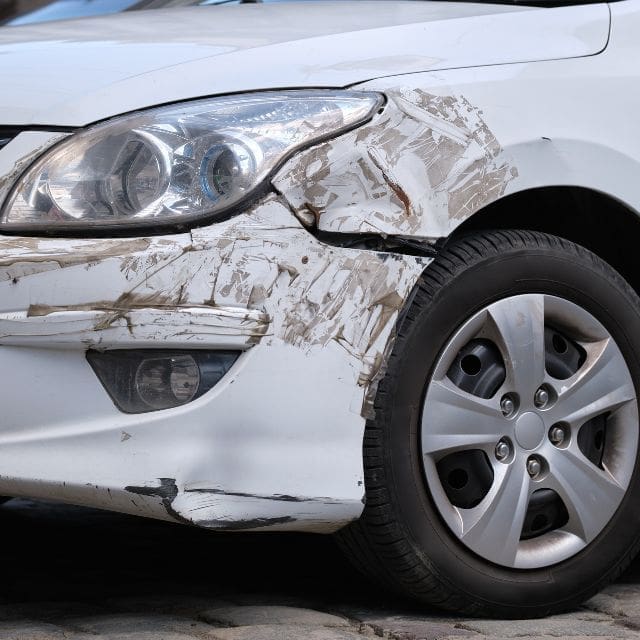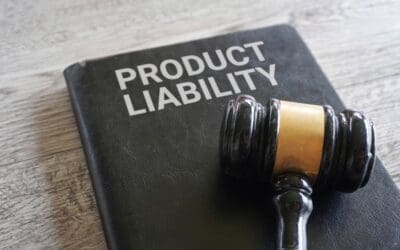Did you know that Florida ranks among the top states for hit-and-run accidents? If you’re unfortunate enough to become a victim of this crime, you must act quickly and decisively. The moments following a hit-and-run can be chaotic and stressful, but your actions in this critical time can drastically impact your ability to recover damages and see justice served. There’s much to ponder, from preserving evidence to maneuvering insurance claims. Understanding the proper steps to take can make all the difference in the outcome of your case and potentially help you avoid financial ruin.

Understanding Hit and Run Accidents
Hit and run accidents Florida are alarmingly common, accounting for about a quarter of all highway incidents. These crashes often leave victims with serious injuries and no one to report the incident, making determining the accident’s cause and identifying the responsible party challenging.
Quick thinking and action are vital when you’re involved in hit and run accidents Florida. You must focus on mitigating your injuries while simultaneously documenting post-crash actions. This can be overwhelming, especially when you cannot obtain pivotal evidence like photographs or the fleeing vehicle’s license plate.
Navigating insurance claims after a hit-and-run can be problematic. You may face difficulties pursuing full compensation for your injuries or property damage without information about the responsible party. It’s indispensable to understand your options and rights in these situations.
Legal Consequences in Florida
Florida takes hit-and-run accidents seriously, imposing severe legal consequences on drivers who flee the scene. You should understand the offender’s potential penalties if you’re involved in a hit-and-run.
Even for accidents involving only property damage, offenders can face up to 60 days in jail and a $500 fine. The stakes are much higher when injuries occur, with potential felony charges carrying prison sentences of up to five years and license revocation for at least three years.
Fatal hit-and-runs are particularly grave. They are classified as first-degree felonies, with mandatory minimum sentences of four years and up to 30 years in prison, plus a $10,000 fine.
The Aaron Cohen Life Protection Act reinforces these strict penalties, ensuring that drivers who cause fatal accidents and flee face significant jail time. Paramount to criminal record implications, offenders also risk civil penalties and may face additional consequences if DUI is involved.
As a victim, you have rights. While the legal system focuses on punishing offenders, seeking legal assistance to protect your interests and pursue compensation for injuries or property damage you’ve suffered is essential.
Immediate Steps After the Incident
Seconds count when you’re involved in hit and run accidents Florida. Your immediate actions can greatly impact the outcome of your case. After ensuring your safety, call the police right away to report the incident.
While waiting for law enforcement, gather as much information as possible about the fleeing vehicle, including its make, model, color, and license plate number.
Don’t overlook the importance of witness statements. Approach bystanders who may have seen the accident and ask for their contact information. Their accounts could prove invaluable during the investigation and potential legal proceedings.
To strengthen your case, follow these essential steps:
- Document the scene: Take photos of the damage, road conditions, and any relevant street signs or landmarks.
- Assess injuries: Seek medical attention for yourself and any passengers, even if injuries seem minor.
- Create a timeline: Note the exact time and location of the incident and weather conditions.

Gathering Evidence at the Scene
After the initial shock of a hit-and-run accident subsides, gathering essential evidence becomes your top priority. Your actions in these critical moments can considerably impact your ability to seek compensation later.
Start by taking detailed photographs of the accident scene, including any damage to your vehicle and surrounding property. Don’t forget to capture skid marks, debris, and road conditions. If you’ve spotted the fleeing vehicle, try to snap a picture of its license plate or any distinguishing features.
Next, focus on witness interviews. Approach anyone who saw the incident and politely ask for their contact information. Their accounts can prove invaluable during incident reconstruction and legal proceedings.
Continue with thorough scene documentation. Note the time, date, and exact location of the accident. Pay attention to nearby traffic cameras or businesses that might’ve surveillance footage.
As you gather evidence, be mindful of evidence preservation. Don’t move any debris or alter the scene unnecessarily. This will help law enforcement and insurance investigators reconstruct the incident accurately.
Insurance Coverage for Hit and Run Accidents Florida
Often, the aftermath of a hit-and-run accident leaves victims feeling overwhelmed and uncertain about their insurance coverage. Florida requires drivers to carry Personal Injury Protection (PIP) coverage as a no-fault state, which typically pays for medical bills after a hit-and-run. However, it’s crucial to understand the PIP coverage limitations and explore additional options.
To navigate the complex insurance terrain after a hit-and-run:
- Review your uninsured motorist benefits, covering damages beyond PIP limits if the at-fault driver isn’t found.
- Gather accident scene evidence to support your claim, including photos, witness statements, and police reports.
- Consider seeking legal assistance, especially if you’re a visitor facing compensation challenges or experiencing insurance disputes.
Police Investigation Process
Three essential steps begin a police investigation into hit and run accidents Florida. First, law enforcement will gather as much information as possible from you about the incident, including details about the fleeing vehicle.
Second, they’ll issue a Be On the Lookout (BOLO) alert and canvass the area. Finally, they’ll analyze physical evidence at the scene.
Evidence-collection strategies are pivotal in these cases. Police will examine vehicle debris, paint transfer, and other clues to identify the suspect’s car’s make, model, and color. Witness identification techniques are central, as investigators will interview bystanders and review surveillance footage.
Hit-and-run suspect profiling helps narrow down potential culprits, while law enforcement coordination guarantees a wider net is cast to locate the fleeing driver. Forensic analysis procedures, such as examining paint samples or broken parts, can provide critical leads.
Seeking Compensation for Damages
While law enforcement works to identify the hit-and-run driver, you’ll need to focus on seeking compensation for your damages. Florida’s no-fault insurance system requires you to file a claim with your personal injury protection (PIP) coverage. However, PIP benefits are limited, so you may need to pursue additional avenues for compensation.
To maximize your chances of recovery, consider these steps:
- Document all damages and injuries thoroughly
- File a claim with your uninsured/underinsured motorist coverage if available
- Consult an experienced hit-and-run attorney to navigate the claims process
Due to Florida’s comparative negligence laws, determining liability factors in a hit-and-run accident can be complex. An independent investigation may be necessary to prove damages and establish fault. If the at-fault driver is identified, you may need to pursue a civil lawsuit to recover economic and non-economic damages.

Prevention and Safety Measures
Safety on the road starts with you. Given that Florida experiences over 700,000 car crashes annually, with hit-and-run accidents making up a quarter, it’s paramount to adopt defensive driving techniques.
Be especially vigilant during dawn, dusk, or nighttime, as these conditions increase hit-and-run risks by 81%.
To enhance road visibility, ensure your vehicle’s lights function properly and use them appropriately. Pedestrian safety initiatives are essential, considering that 76% of hit-and-run fatalities involve pedestrians and bicyclists.
Always yield to pedestrians and maintain a safe distance from cyclists.
Community outreach programs, like Florida’s “Hit-and-Run Awareness Campaign,” are pivotal in educating drivers about their responsibilities after a crash. Participate in these programs to stay informed and help raise awareness.
Distracted driving prevention is central to reducing accidents. Put away your phone, avoid eating while driving, and stay focused on the road.
Road to Revory
A hit-and-run accident in Florida can knock you off balance, but you’re now armed with crucial knowledge to handle the situation. Your quick actions after the crash can greatly influence your case’s outcome. From securing vital evidence at the scene to grasping the ins and outs of insurance coverage and legal requirements, each move matters.
The journey to healing and justice might seem steep, but you don’t have to face it solo. Hit and run accidents Florida cases often demand expert guidance to ensure you get the compensation you deserve. This is where a seasoned legal professional’s experience can tip the scales in your favor.
Calandro Law: Your Ally in Hit and Run Accidents Florida
At Calandro Law, we’re well-versed in hit and run accidents Florida. Our team of battle-tested attorneys focuses on tackling these tricky cases, offering the support and know-how you need to safeguard your rights and secure fair compensation.
Don’t let the pressure and uncertainty of a hit-and-run accident weigh you down. Take the first step towards justice and recovery by contacting Calandro Law today. Our dedicated team stands ready to examine your case, address your concerns, and steer you through each phase of the legal process.
Reach out to Calandro Law now for a free consultation. Let us help you transform this challenging situation into a chance for justice and fair compensation. Your path to recovery begins with one call – don’t delay; get in touch with us today.



